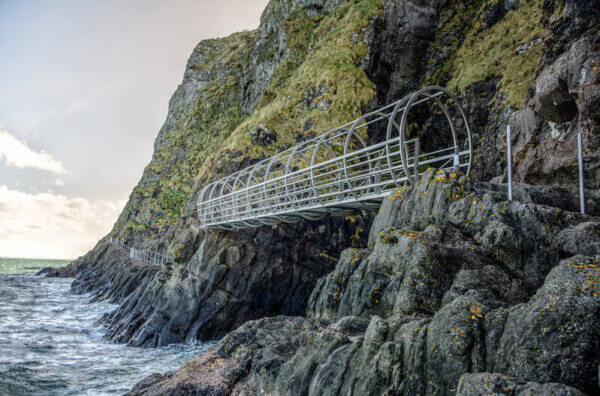Updated October 2021: The Causeway Coastal Route, a popular driving destination in Northern Ireland that showcases the area’s incredible beauty, was given £25,000 in 2020 from Invest Northern Ireland’s Collaborative Growth Program to enhance a number of popular attractions that include The Gobbins and others.
This news item and page contain affiliate links and I may earn compensation when you click on the links at no additional cost to you.

The other attractions include The Glens of Antrim and Causeway, as well as Binevenagh, a mountainous region in Co. Derry.
Here is some more information on each of these attractions on the Causeway Coastal Route.
The Gobbins
Located in Islandmagee in County Antrim, The Gobbins Cliff Path is a coastal trail that will take you across bridges, past caves, and through a tunnel, all while taking in the stunning beauty of the Irish Sea coastline with its rich birdlife.
It is located about 20 miles (32 km) from Belfast.
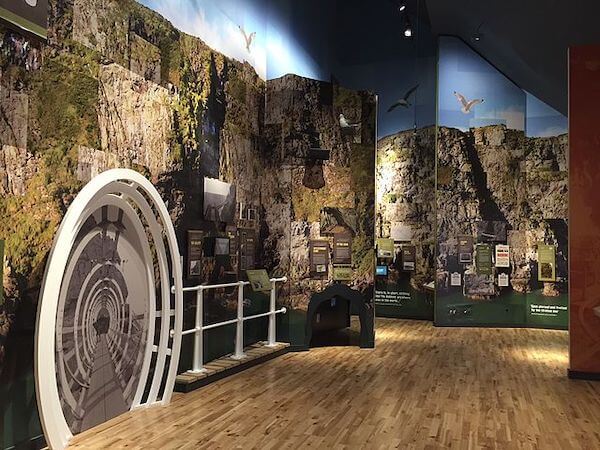
The path, opened in 1902, was the vision of Berkeley Deane Wise, chief engineer of the Belfast and Northern Counties Railway Company.
With the advent of the railway in the 19th century, it was possible to not only move goods from city to city but also to transport people to places they might never have seen before.
Wise’s vision was to use the recently expanded railway in Northern Ireland to attract visitors to this new path.
Grab the Free Activities to Do in Ireland List
And while thousands of people visited The Gobbins during the first few decades of the 20th century, the railway company’s financial difficulties forced the closure of the Gobbins Cliff Path leading up to World War II.
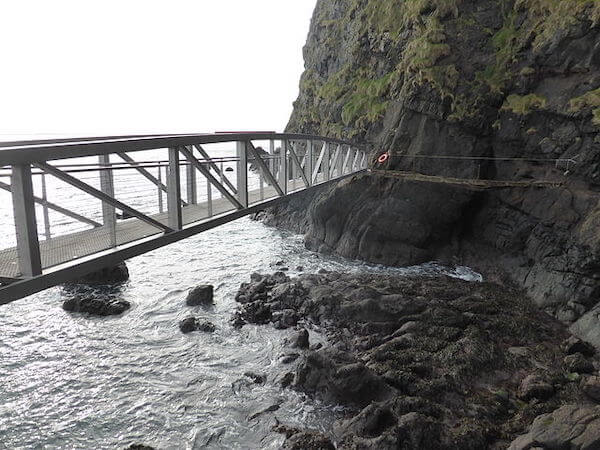
It wasn’t until the mid-2000s that the path was modernized and opened to the public once again, thanks to a grant from the European Union.
A visit to The Gobbins includes a 2.5-hour guided walking tour. The path itself is arduous and often narrow and uneven, so it may not be for everyone.
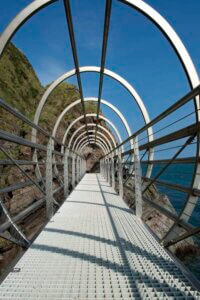
Some of the highlights include the tubular bridge, an exposed tubular walkway that was built about 32 feet above the ocean; the “aquarium,” which is where the walk bends like an elbow in the Irish Sea below, forming a natural aquarium of seawater; and “Wise’s Eye,” a rock formation that provides access to the most spectacular section of the path.
Before taking the walk, it is advisable to wear suitable clothing and good hiking boots with good tread and ankle support.
Everyone is required to wear a helmet.
The attraction is open daily from 8:30 a.m. to 5 p.m. You must pre-book your tickets.
Admission is £20 for adults; £14.50 for children up to age 16, seniors, and students; and £42 for a family ticket (2 adults, 1 child).
The Glens of Antrim
Known locally as The Glens, this area of Northern Ireland contains nine glens of outstanding beauty that are located in North Antrim.
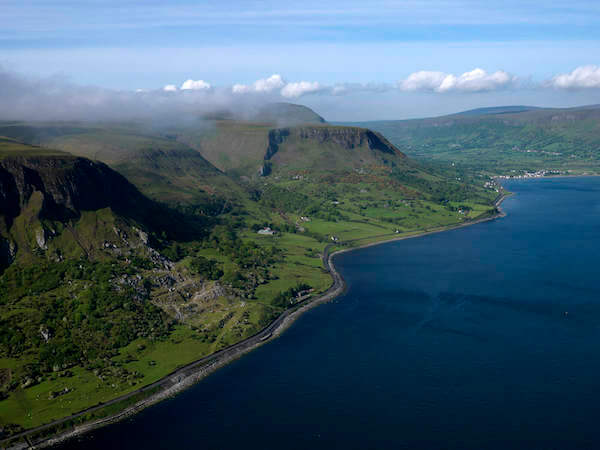
The Glens landscape includes lush forests, grasslands, sandy beaches, rocky cliffs, waterfalls, and more.
There are actually nine glens in this region.
They include:
- Glenarm, also known as the Valley of the Army;
- Glencoy, also known as the Valley of the Sword;
- Glenariff, also known as the Valley of the Plough;
- Glenballyeamon, also known as Valley Edwardstown;
- Glenaan, also known as the Valley of the Little Fords;
- Glencorp, also known as the Valley of the Dead;
- Glendun, also known as the Valley of the Dun;
- Glenshesk, also known as the Sedgy Glen; and
- Glentaisie, the most northerly of the glens and named after Princess Taisie of Rathlin Island.
You can explore the region on foot or by car.
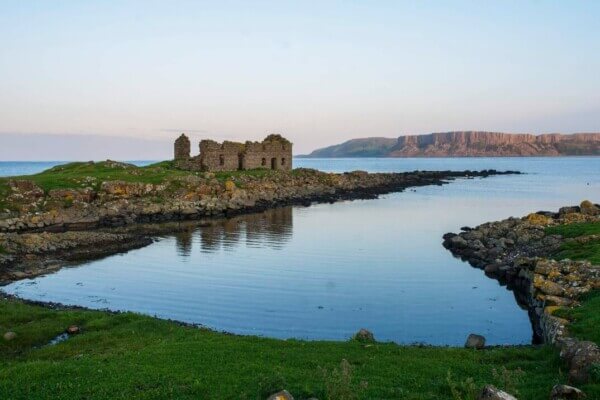
The Ulster Way is a 625-mile (1,000 km) circular waymarked walking trail that runs close to the sea and incorporates much of The Glens area.
The Moyle Way is another trail that runs through the heart of The Glens.
The 26-mile (42 km) waymarked route brings walkers inland from Glengarriff Forest in the south of Antrim to Ballycastle on its northern coast.
Take a Tour of the Giant's Causeway and the Glens of Antrim (for groups of up to 4 people)
Binevenagh
If you’re a Game of Thrones fan, you may already know that the popular HBO series was filmed in the area of Northern Ireland called Binevenagh.
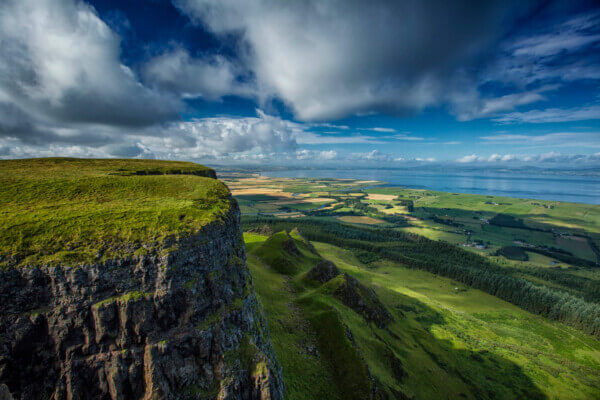
The mountainous region of Co. Derry, in particular the cliffs of Binevenagh, formed the backdrop for a scene in which Daenerys Targaryen is surrounded by Dothraki horsemen and taken as a prisoner.
The nearby Downhill beach, also part of the Binevenagh region, is where other scenes from the series were filmed.
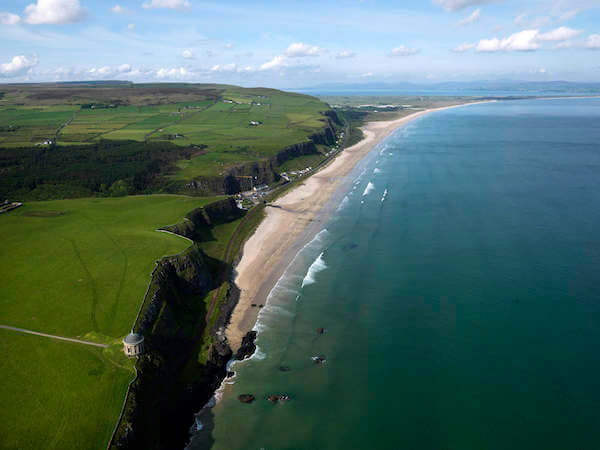
Exploring Binevenagh can be done on foot or by car.
If you’re driving, take the Bishop’s Road that extends across the plateau.
Local attractions include Mussenden Temple, which belongs to the National Trust and is part of the Downhill Demesne Walk.

